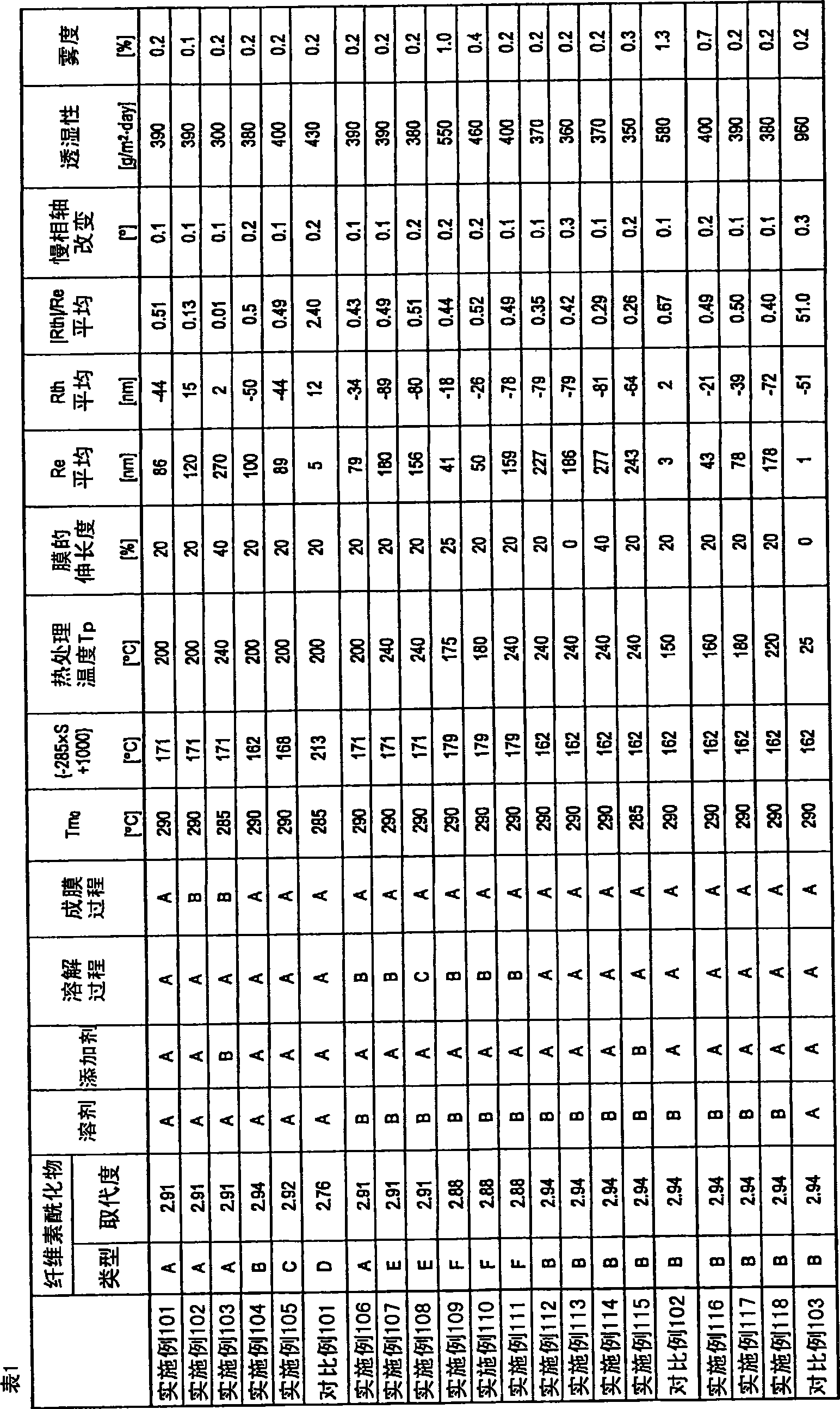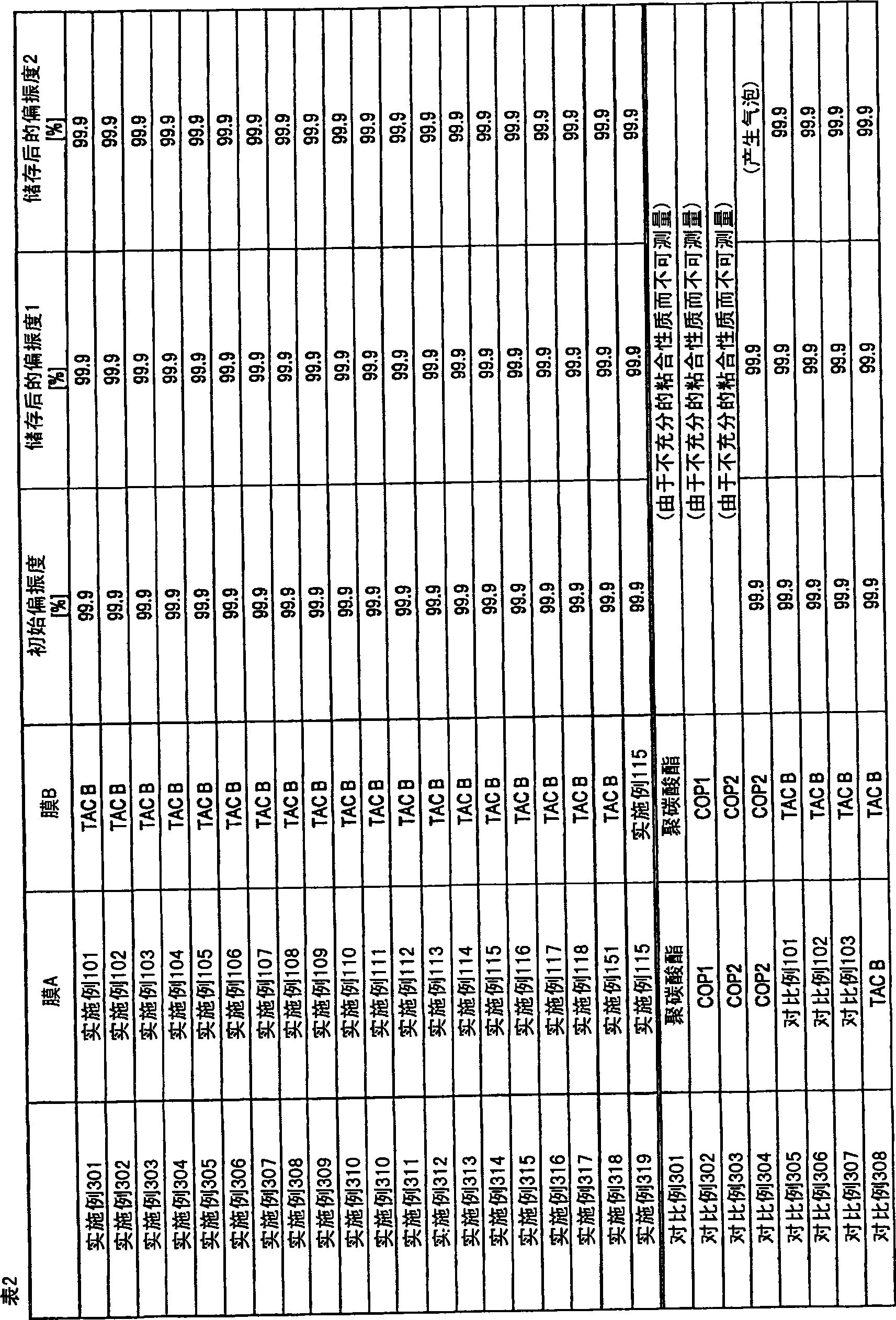Cellulose acylate film and method for producing same, and retardation film, polarizer and liquid crystal display device comprising the film
A technology of cellulose acylate and cellulose, which is applied in the direction of polarizing elements, flat products, and other household appliances, can solve the problems of consumption of heat-shrinkable films, unstable film quality, and increased preparation steps, so as to achieve reduced fluctuations, The effect of excellent transparency and high reliability
- Summary
- Abstract
- Description
- Claims
- Application Information
AI Technical Summary
Problems solved by technology
Method used
Image
Examples
preparation example Construction
[0078] As for the production method of cellulose acylate, its basic principle is described in Wood Chemistry by Nobuhiko Migita et al., pp. 180-190 (Kyoritsu Publishing, 1968). A representative method for producing cellulose acylate is a liquid-phase acylation method using a carboxylic anhydride-carboxylic acid-sulfuric acid catalyst. Specifically, cellulose raw materials such as cotton pulp or wood pulp are pretreated with an appropriate amount of carboxylic acid such as acetic acid, and then placed in a pre-cooled acylation mixture for esterification, thereby preparing complete cellulose acylate (2- , 3- and 6-positions of the acyl total substitution degree is close to 3.00). The acylation mixture generally contains a carboxylic acid as a solvent, a carboxylic anhydride as an esterification agent, and sulfuric acid as a catalyst. Typically, the amount of carboxylic anhydride used in the process is in stoichiometric excess relative to the total amount of water present in the...
Embodiment 101-118
[0229] [Example 101-118, Comparative Example 101-103]
[0230] (preparation of polymer solution)
[0231] 1) Cellulose acylate:
[0232] In each of Examples and Comparative Examples, cellulose acylate A to F described later was used according to Table 1. Each cellulose acylate was heated and dried at 120°C so that the water content was 0.5% by mass or less. After that, 15 parts by mass of cellulose acylate was used.
[0233] Cellulose acylate A:
[0234] Cellulose acetate powder from pulp with a degree of substitution of 2.91 was used. The viscosity-average degree of polymerization of cellulose acylate A was 270, and the degree of substitution of 6-acetyl group thereof was 0.93. The average diameter of the powder particles is 1.5 mm with a standard deviation of 0.5 mm.
[0235] Cellulose acylate B:
[0236] Cellulose acetate powder from pulp with a degree of substitution of 2.94 was used. The viscosity-average degree of polymerization of cellulose acylate B was 300, an...
Embodiment 151
[0299] (re-stretching of film)
[0300] The stretching was carried out by holding both ends of the cellulose acylate film in Example 113 with tenter clips to stretch the film in a direction perpendicular to the conveying direction in the heating zone. The temperature in the heating zone was 160°C and the draw ratio was 25%. The stretching ratio of the film was obtained according to the following formula in such a manner that the gauge lines of the film were set at constant intervals in a direction parallel to the conveying direction of the film, and the interval was measured before and after stretching.
[0301] Stretch ratio of the film (%) = 100 × {(the distance between the ruler and gauge lines after stretching)-(the distance between the ruler and gauge lines before stretching)} / the distance between the ruler and gauge lines before stretching
[0302] Re and Rth values of the obtained thin film were measured, whereby Re = 160 nm and Rth = -2 nm were obtained. The slow p...
PUM
| Property | Measurement | Unit |
|---|---|---|
| thickness | aaaaa | aaaaa |
| particle size | aaaaa | aaaaa |
| diameter | aaaaa | aaaaa |
Abstract
Description
Claims
Application Information
 Login to View More
Login to View More - R&D
- Intellectual Property
- Life Sciences
- Materials
- Tech Scout
- Unparalleled Data Quality
- Higher Quality Content
- 60% Fewer Hallucinations
Browse by: Latest US Patents, China's latest patents, Technical Efficacy Thesaurus, Application Domain, Technology Topic, Popular Technical Reports.
© 2025 PatSnap. All rights reserved.Legal|Privacy policy|Modern Slavery Act Transparency Statement|Sitemap|About US| Contact US: help@patsnap.com


